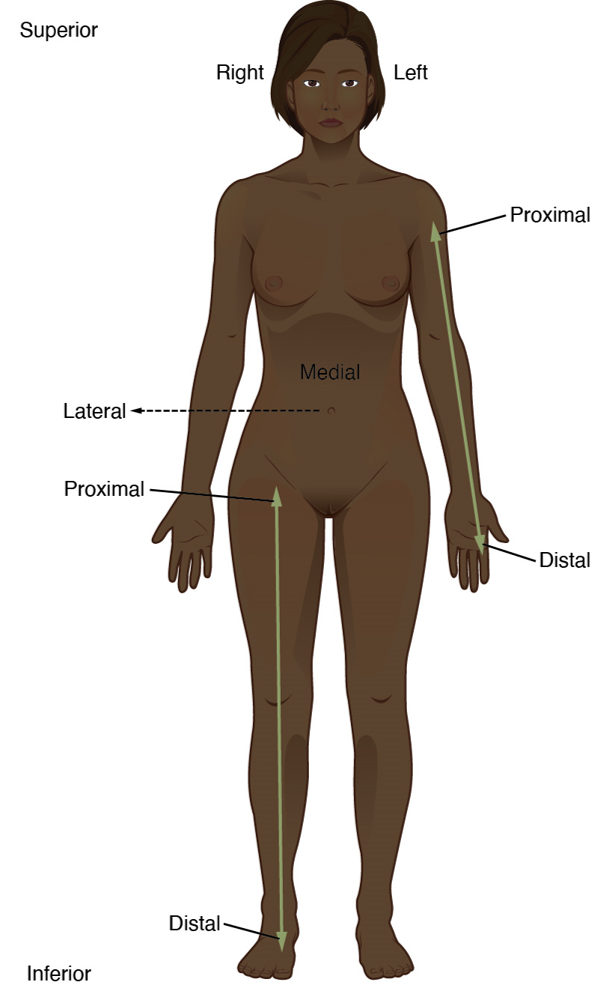1.2: Anatomical Position
- Page ID
- 53507
Anatomical Position
The anatomical position allows health care providers to communicate consistently giving the proper orientation when dealing with patients. The anatomical position refers to upright, facing forward, arms and legs straight, palms facing forward, feet flat on the ground and eyes open. All of the directional terms in the following section are used based on a human who is in anatomical position. For example, if a human is doing a head stand, their head is still considered to be superior to their feet since directionality terms ALWAYS refer to anatomical position.

When referencing a structure that is on one side of the body or the other, we use the anatomical right and the anatomical left. Anatomical right means that the structure is on the side that a person in anatomical position would consider their right-hand side (not necessarily on the right of the viewer) and anatomical left means that the structure is the side that a person in anatomical position would consider their left-hand side (which likewise is not necessarily the left side of the viewer.)
Attributions
- "Anatomy and Physiology" by J. Gordon Betts et al., OpenStax is licensed under CC BY 4.0
- "Anatomy and Physiology I Lab" by Victoria Vidal is licensed under CC BY 4.0
- "BIOL 250 Human Anatomy Lab Manual SU 19" by Yancy Aquino, Skyline College is licensed under CC BY-NC-SA 4.0


